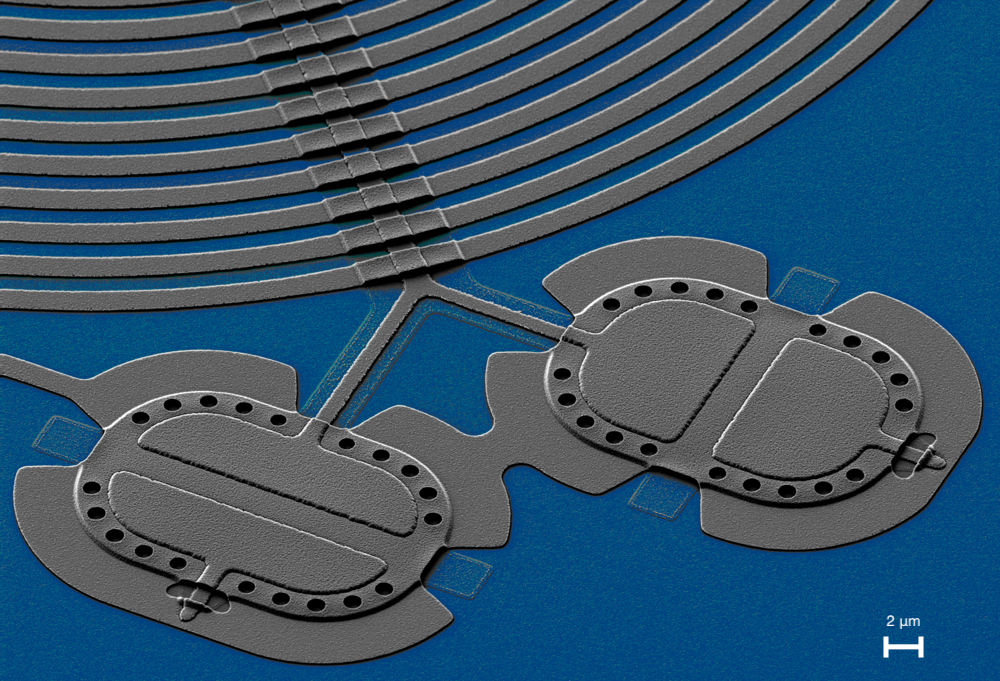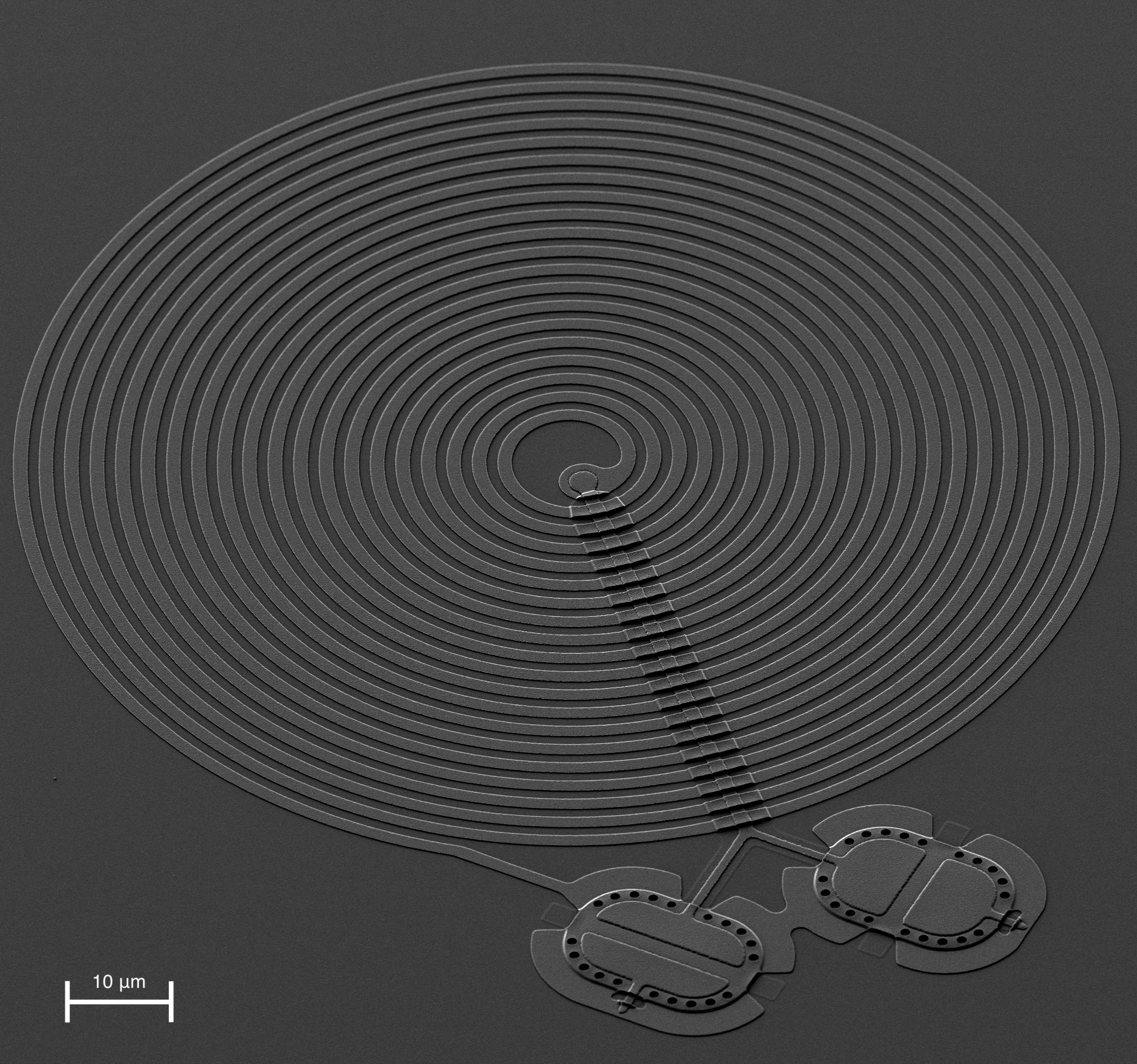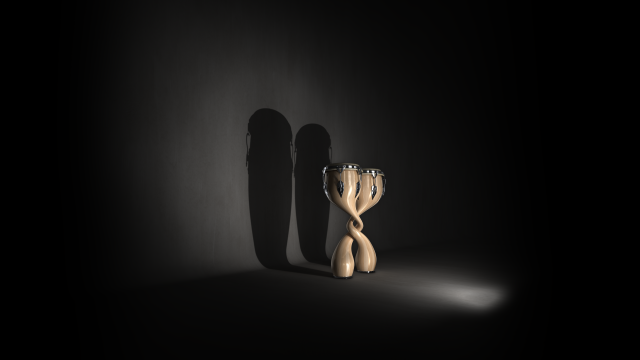Physicists have built two tiny drums, each as large as a human hair is wide, and synchronised their vibrations exactly. They achieved this perfect unison of drums using a quantum mechanics phenomenon known as entanglement — and the drums could be useful for developing quantum computers.
The two drums play together with a precision far beyond what an orchestra or two matching metronomes can achieve. “They essentially become one entity,” said physicist Shlomi Kotler of the Hebrew University of Jerusalem, who performed the experiment while working at the National Institute of Standards and Technology in Boulder, Colorado. Kotler’s team published their work in the journal Science this month.

Kotler beat the drums using microwave light. The microwaves cause the surface of the two drums, made of aluminium, to compress and bulge like a trampoline. Monitoring the two drum heads, his team measured the position of the one drum’s surface to always match the position of the other. The drum surfaces always moved at the same speed but in opposite directions.
The drums move in relation to each other, like the two ends of a seesaw. Sitting on one end of the seesaw with your eyes closed, you know that when you have gone up, the other end must have gone down. The positions and speeds of the two ends are synchronised because they are part of a single object. Through his experiment, Kotler essentially makes the two separate drums behave like they are somehow connected, like the two ends of the seesaw. Among physicists, this is known as a form of quantum entanglement, where the fates of two different objects become intertwined. The idea famously gave Einstein pause about quantum theory, as it suggested that objects could affect each other from arbitrarily far away. For example, entanglement implies that, if you separated two entangled objects by placing one on Earth and one on Neptune, that interfering with one would instantaneously affect the other. Einstein referred to this implication as “spooky action at a distance.”
Despite Einstein’s scepticism over whether spooky action actually occurs, experiments over several decades have corroborated that entanglement is real. Physicists have entangled as many as 18 photons at a time, where the state of one photon is related to the other 17. They have even entangled different objects, with one group entangling a tiny drum like Kotler’s with a cloud containing a billion cesium atoms. In that case, interfering with the drum’s vibrations changed how the cesium atoms were spinning in the cloud.
Kotler conducted this experiment inside a freezer kept a hundredth of a degree above absolute zero. This was necessary because higher temperatures cause the drums to vibrate randomly, preventing them from achieving synchrony. To entangle the drums, Kotler connected both via wires to a circuit that stores microwave radiation. As the circuit transfers microwaves to and from both drums according to a specific protocol, the drums become entangled.
The experiment is the latest in a trend among physicists to produce entanglement in progressively larger objects. According to the theory of quantum mechanics, objects of all sizes should be able to exhibit entanglement. However, physicists have historically only observed quantum phenomena in tiny objects such as single atoms. Despite being small in an everyday sense, the drums are a trillion atoms apiece. “They are pushing the boundary between the quantum and classical world,” said physicist Kero Lau of Simon Fraser University in Canada.

But the two drums are not merely a scientific curiosity. Researchers would like to use them as components of a quantum computer, which encode information in hardware known as qubits that represent information as a probability, rather than a definitive 1 or 0 as in regular computing. The computer processes information through logical operations on its qubits that rely on those qubits being entangled.
These tiny drums could be used as qubits, storing information as motion, said Kotler. As a quantum mechanical object, each drums’ surface does not always have a definite position. Its position exists as a likelihood, just as a coin flipping in the air is neither heads nor tails but some probability of both. Similarly, the drum surface can have some likelihood of being compressed and bulging at the same time, and quantum computing researchers can use this mixture of positions to represent a combination of 1 and 0. In addition, entanglement enables the drums to interact with each other to perform computational operations.
Researchers can also use these drums to connect different quantum computers, said Lau. The drums could act as an intermediate node between two different quantum computers based on superconducting qubits, for example. A superconducting quantum computer, which encodes information in microwaves, could send that information to store in the vibrations of an array of drums. Those drums could then convert the information back into microwaves to send to another quantum computer over a long distance. This type of connection would form the basis of the “quantum internet,” a goal of physicists to create a network of quantum computers.
Kotler’s demonstration advances the tiny drums as a quantum computing technology, because his setup can produce entanglement on command. “You push a button, and it happens,” said Kotler. While other teams have entangled two drums in the past, they could not do it with the same consistency as Kotler.
The drums stay entangled for about 200 microseconds, said Kotler. While the time seems short, Kotler anticipates it’s enough time to manipulate the drums to perform interesting operations in a quantum computer. The next step is to make the entangled drums execute these more elaborate protocols, he said.
His experiment also demonstrates how the development of quantum computing technology is fuelling deeper understanding about quantum mechanics, and vice versa. “They go hand in hand,” said Kotler. As researchers build more devices that use entanglement and other quantum weirdnesses, quantum mechanics itself becomes less weird.
